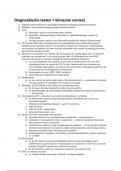Samenvatting
Interorganizational Relationships - Summary core papers, lectures and other papers - including visualisations (440804-M-6)
-This document contains all articles, lecture notes and the core papers. The non-core papers I have elaborated on the basis of the lectures and possibly supplemented with visualisations. I have summarised the core papers on the basis of the examination questions that were asked in our year. In addi...
[Meer zien]






